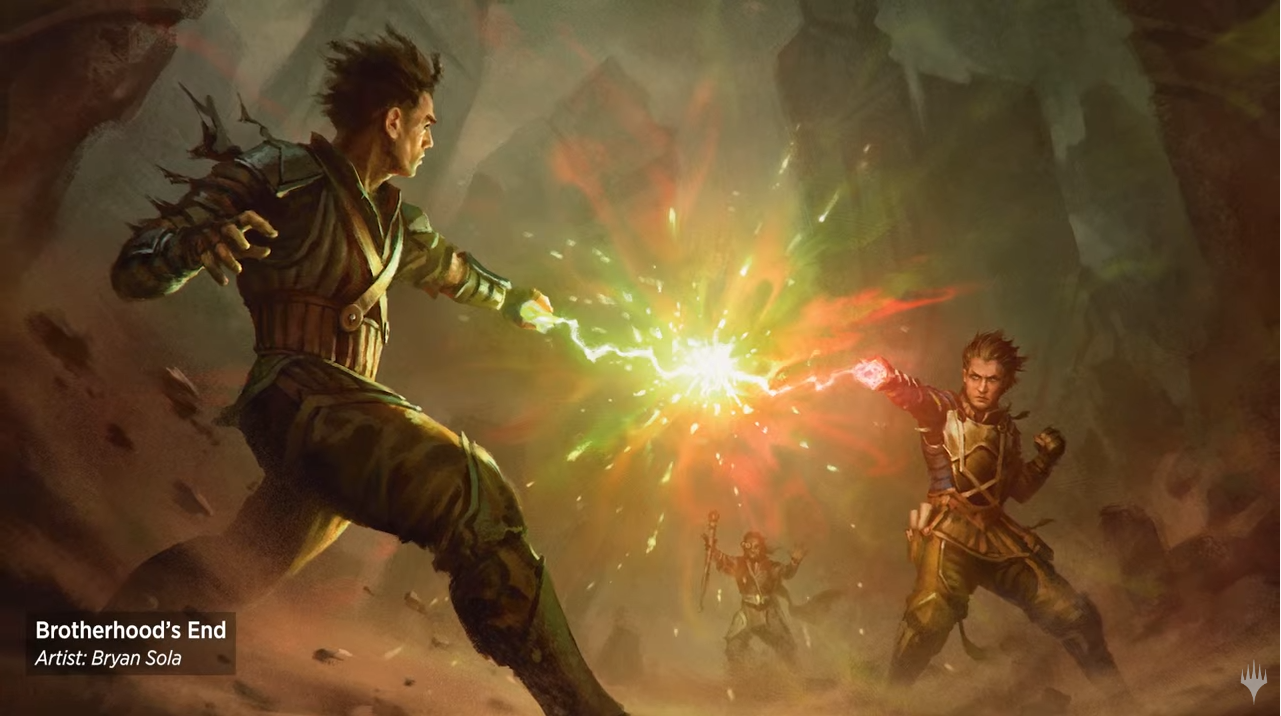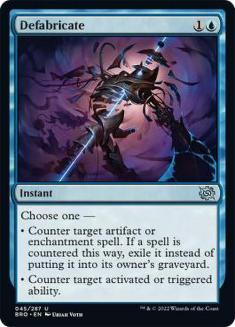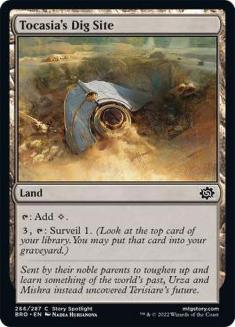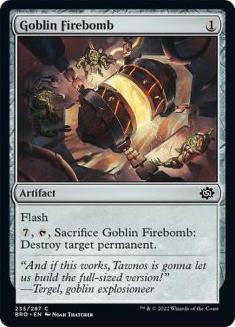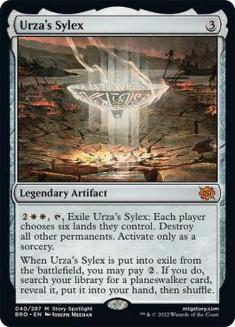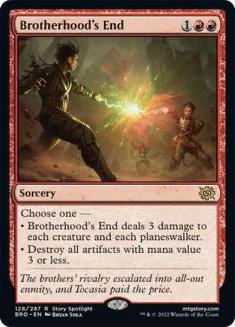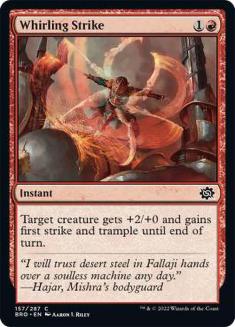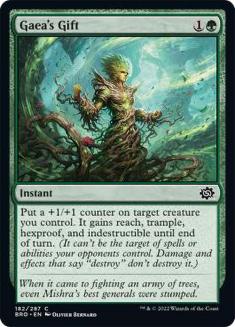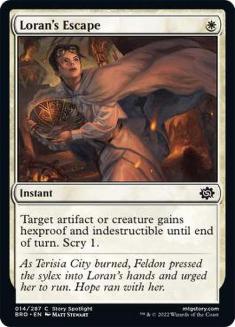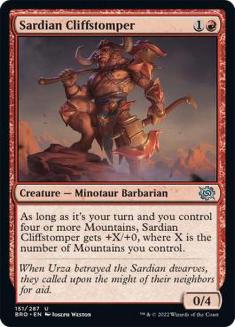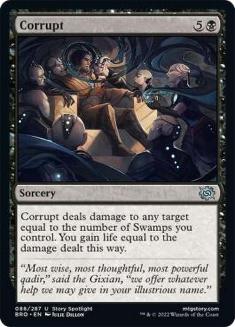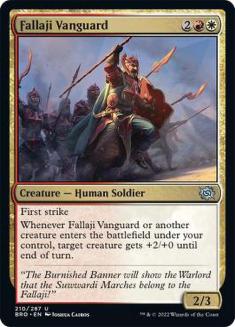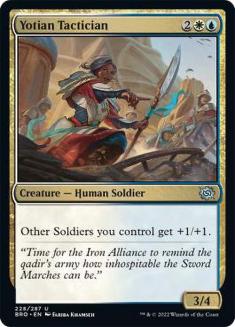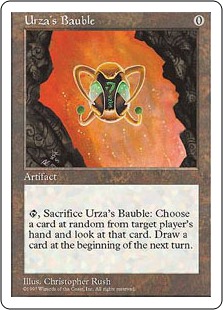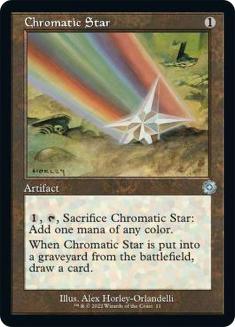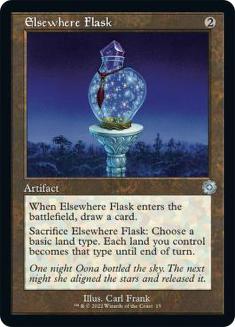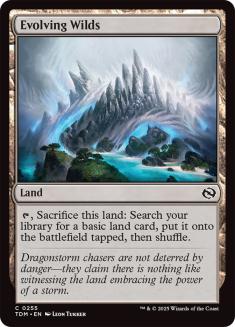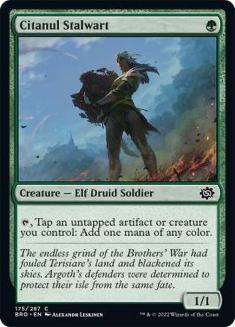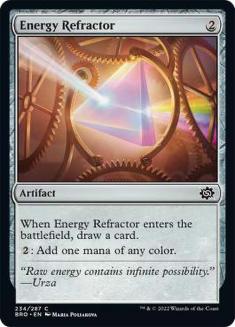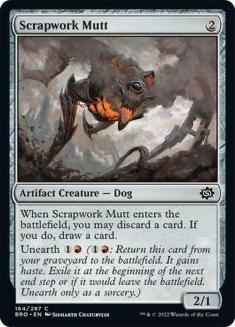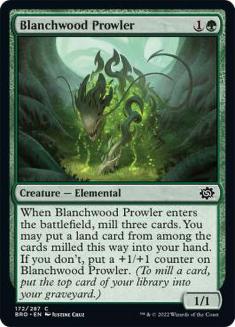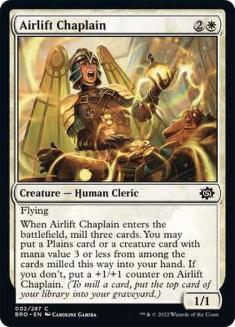We’ve been spoiled as of late, with Limited sets being at an all-time high in terms of quality and replayability. The Brothers’ War has proven to be a fun, diverse, format, with tons of fun interactions and a variety of strong decks. Here are some insider tips to making the most of your drafts with the set.
Format Speed: High
The speed of the format is far too fast to rely on counterspells. Both Defabricate and Urza’s Rebuff are largely unplayable, and Scatter Ray has been highly disappointing in my experience. Cards that “do nothing” like Energy Refractor can become a liability if you end up on the draw. That’s not to say Energy Refractor is a bad card, but I wouldn’t be excited to throw it in any deck that doesn’t have some merits to play it. Once again, I’d actively avoid playing cards like Tocasia’s Dig Site and Goblin Firebomb due to the lack of impact in the early- to mid-game.
Card Flexibility: Excellent (but Play to a Plan)
I’ve touched on this in previous articles, in that there are very few unplayable cards in contemporary Limited. Instead, the game has evolved to encourage gameplans, certain cards thriving in the right builds, where they would be mediocre otherwise.
Sweepers: Weak
One great thing about this format is the complete lack of efficient sweepers. Both players can play an honest game of Magic, not having to worry about getting blown out by a rare. The only sweeper that hits everything is Urza’s Sylex, which is too expensive to surprise anyone, but could be a potential sideboard option (it’s still bad). Brotherhood’s End can kill ♫All the, Small Things♫, but also kills most of red’s creatures, so it’s easy to sniff out most of the time. I would worry most about Gruesome Realization in Best-of-Three post-sideboard if it’s strong against you.
Tricks: Strong
There are some very potent tricks in this set, which often makes blocking a bit tricky. Whirling Strike and Gaea’s Gift are the most aggressive ones, regularly enabling early attacks and also trampling to end games.
White gets Loran’s Escape and Military Discipline. The former is a solid protection spell and the latter helps you win combat and push damage. Both are underrated cards that require some practice to see what decks they work best in. Deadly Riposte should be reserved for a sideboard card in Best-of-Three, unless you have some form of white control deck. Moment of Defiance is an amazing trick, and still underrated. It often acts as a kill spell, draws a card, and gains some life for three mana.
Mono-Colored Decks: Solid (Except for Blue)
A sign of a diverse Limited format is when mono-colored decks are an available archetype to play. They come together less often, but can be extremely powerful when they do. With Mono-Red at the top of the heap, the other colors can be very strong as well, except for blue. Mono-Blue doesn’t really have all the tools it needs at common to be a powerful mono-colored deck, though it’s not impossible.
Color Pairings: Reasonably Balanced (Not Simic, Though)
I don’t want to spend too much time breaking down individual color pairs, aside from outlining what seem to be the best and worst. There’s actually a pretty good color balance in The Brothers’ War. Most color pairs have a similar win rate, with the front-runners being Azorius and Boros. Simic is regarded as the worst archetype, as the big monster payoffs die to a two-mana Disenchant. That’s not to say the archetype is unplayable, but the better payoffs are Argothian Sprite and Third Path Savant.
Cantrips: Abundant
There’s a plethora of cantrips in this format, all with a different “bonus.” Mishra’s Bauble is the best of the bunch, effectively letting you play 39 cards while getting a free sacrifice trigger as well as a free trigger for Yotian Dissident, Third Path Iconoclast, as well as minor synergies with many other cards. Chromatic Star and Energy Refractor are nice fixers for a three-plus-color deck, with the latter being a solid option to pay for different unearth mana costs. Elsewhere Flask enables some fun strategies with Corrupt and Sardian Cliffstomper. Soul-Guide Lantern is the weakest of the bunch in Best-of-One, but a very strong sideboard option for Best-of-Three!
Evolving Wilds: A Top Common
A friend of mine made an early call about Evolving Wilds this set, oversimplifying that it’s one of the best commons in this set. To extrapolate what he meant by this, it’s all about the flexibility this card provides. Not only does an Evolving Wilds allow you to make some splashes as one would normally expect, it allows you to play sources for unearth cards if you have enough of them. In addition, the ever developing wilderness provides triggers for cards like Goblin Blast-Runner and Gixian Infiltrator – both can be strong build-arounds in multiples.
Splashing: Relies on a Few Cards
Aside from the cantrips and Evolving Wilds previously discussed, there’s really no other fixing besides the little Elf Druid Soldier that could, Citanul Stalwart. For those who didn’t play Kaldheim, this isn’t quite as powerful as Jaspera Sentinel was within the context of the environment. It is a solid card in its own right, with myriad applications.
Obviously, this is the go-to green card for splashes. It enables you to unearth artifacts of different colors, turn Powerstones into lands, and stay ahead on mana the entire game. In a lot of cases, you can cut lands for Stalwarts in close to a 1:1 ratio depending on your deck. Lastly, it enables some cool combos with things like Howling Mine and Key to the City. Citanul Stalwart requires some considerations in deckbuilding, but is a powerful card in its own right.
Land Count: Seventeen (Unless You Can Cheat)
As usual, I would recommend different approaches if you are playing Best-of-Three or Best-of-One, with the latter allowing a greedier approach due to the MTG Arena hand smoother. It’s pretty rare in this format that you will want to play more than seventeen lands, though there are corner cases where decks don’t want to miss a land drop turn five that should encourage more lands.
I’ve heard of players wanting to cut lands when they have multiples of cards like Scrapwork Mutt and Bitter Reunion, but these cards are at their worst when having to use them to dig for lands, so I don’t let them impact my land count too much.
There are however quite a few cards that can let you cheat on some lands. Most of the cantrips can be taken into consideration, with Soul Guide-Lantern and Energy Refractor being at the very bottom of that list. We talked about Citanul Stalwart previously, but other creatures to consider would be Blanchwood Prowler and Airlift Chaplain. There’s also the consideration of the mana costs of your deck and ability to prevent flooding with cards like Scrapwork Mutt. I still have a lot of seventeen-land decks, but I’ve also had great decks with fourteen lands as well.
Lose and Learn, Learn and Win!

